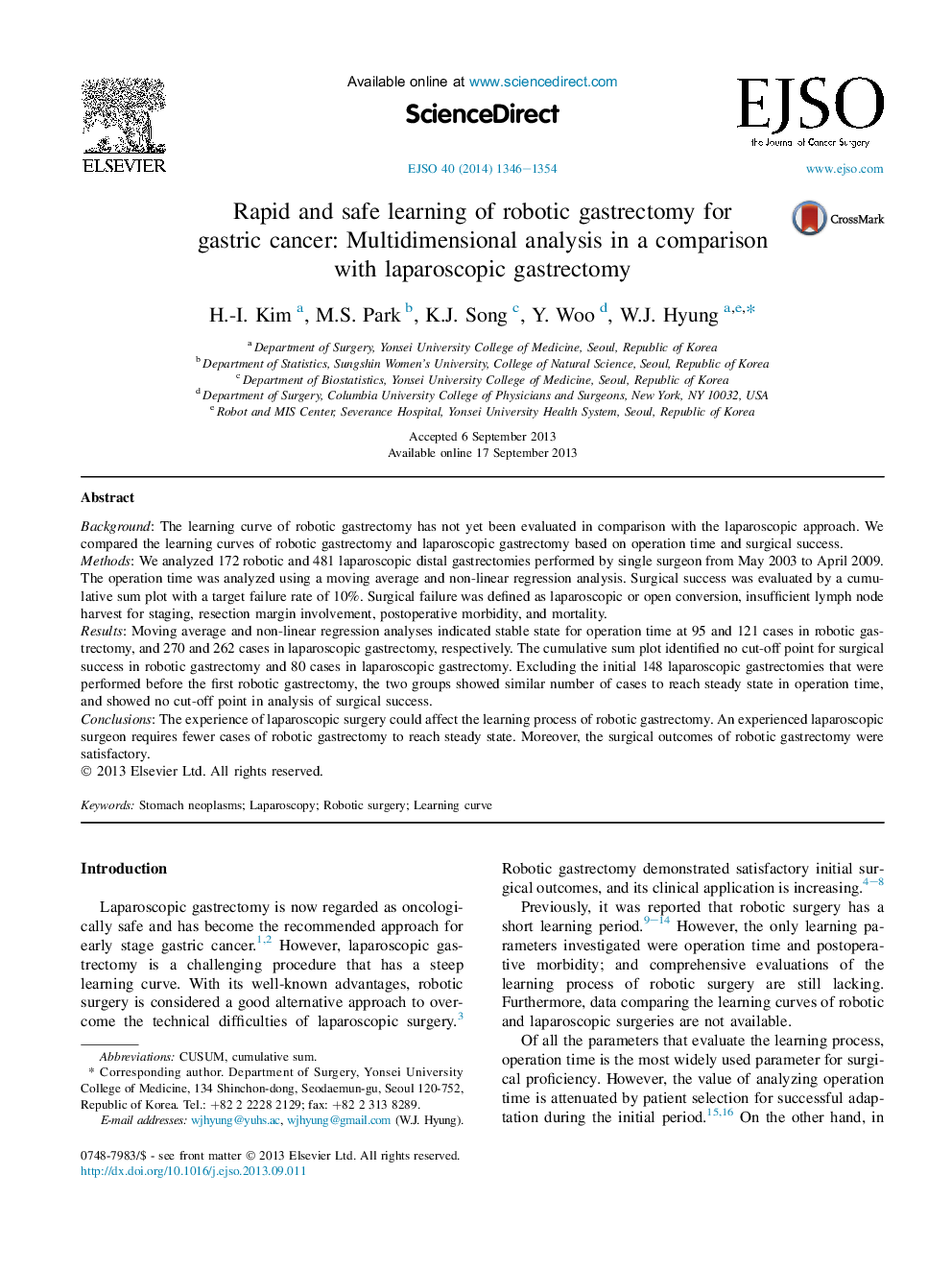| Article ID | Journal | Published Year | Pages | File Type |
|---|---|---|---|---|
| 3985185 | European Journal of Surgical Oncology (EJSO) | 2014 | 9 Pages |
BackgroundThe learning curve of robotic gastrectomy has not yet been evaluated in comparison with the laparoscopic approach. We compared the learning curves of robotic gastrectomy and laparoscopic gastrectomy based on operation time and surgical success.MethodsWe analyzed 172 robotic and 481 laparoscopic distal gastrectomies performed by single surgeon from May 2003 to April 2009. The operation time was analyzed using a moving average and non-linear regression analysis. Surgical success was evaluated by a cumulative sum plot with a target failure rate of 10%. Surgical failure was defined as laparoscopic or open conversion, insufficient lymph node harvest for staging, resection margin involvement, postoperative morbidity, and mortality.ResultsMoving average and non-linear regression analyses indicated stable state for operation time at 95 and 121 cases in robotic gastrectomy, and 270 and 262 cases in laparoscopic gastrectomy, respectively. The cumulative sum plot identified no cut-off point for surgical success in robotic gastrectomy and 80 cases in laparoscopic gastrectomy. Excluding the initial 148 laparoscopic gastrectomies that were performed before the first robotic gastrectomy, the two groups showed similar number of cases to reach steady state in operation time, and showed no cut-off point in analysis of surgical success.ConclusionsThe experience of laparoscopic surgery could affect the learning process of robotic gastrectomy. An experienced laparoscopic surgeon requires fewer cases of robotic gastrectomy to reach steady state. Moreover, the surgical outcomes of robotic gastrectomy were satisfactory.
